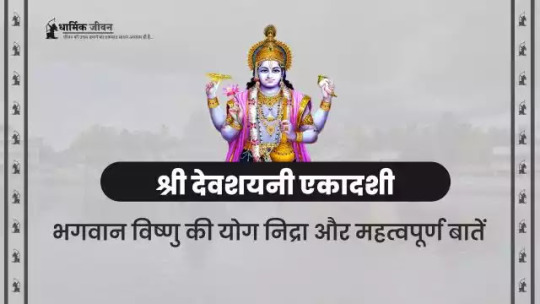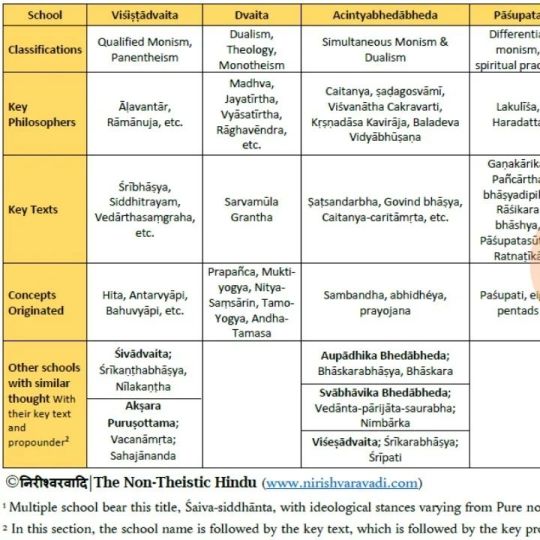#hindutraditions
Photo

New Post has been published on https://www.knewtoday.net/the-vedas-sacred-scriptures-of-hinduism/
The Vedas: Sacred Scriptures of Hinduism

The Vedas are the ancient and revered scriptures of Hinduism, embodying the spiritual wisdom and religious practices of the ancient Indian civilization. Composed in Vedic Sanskrit, these texts have been passed down through generations for thousands of years and continue to hold immense significance in Hindu religious and philosophical traditions.
The word “Veda” originates from the Sanskrit root “vid,” which means knowledge or wisdom. Thus, the Vedas are often regarded as a divine revelation, representing the profound insights and eternal truths perceived by ancient seers and sages.
Believed to have been composed between 1500 and 500 BCE, though their oral tradition may extend even further back in time, the Vedas consist of four main collections known as Samhitas. These collections are the Rigveda, Yajurveda, Samaveda, and Atharvaveda. Each Samhita serves a distinct purpose, encompassing hymns, prayers, rituals, and philosophical discourses.
The Rigveda, the oldest and most significant of the four, contains hymns dedicated to various deities, celebrating cosmic forces and natural phenomena. It offers a glimpse into the religious and social life of the ancient Vedic society.
The Yajurveda focuses on the performance of rituals and sacrifices, providing detailed instructions and verses to guide priests during religious ceremonies. It emphasizes the importance of correct recitation and the proper execution of rituals for spiritual attainment.
The Samaveda centers around melodies and chants derived from the Rigveda. It is primarily concerned with the musical aspects of rituals, elucidating the power of sound and rhythm in invoking divine energies.
The Atharvaveda encompasses a diverse range of hymns, spells, and incantations. It addresses practical aspects of life, including healing, protection, and averting misfortunes. It also delves into philosophical and ethical teachings.
Additionally, the Vedas comprise supplementary texts known as Brahmanas, Aranyakas, and Upanishads. The Brahmanas provide ritualistic explanations, the Aranyakas serve as texts for hermits and seekers in forest retreats, while the Upanishads delve into profound metaphysical and spiritual concepts, exploring the nature of reality, self, and ultimate truth.
The Vedas hold a central position in Hinduism and are regarded as the foundational scriptures upon which the diverse branches and philosophies of Hindu thought have been built. They have influenced religious rituals, philosophical schools, and ethical principles throughout history, shaping the religious practices and beliefs followed by millions of Hindus worldwide.
Today, the Vedas continue to inspire seekers of wisdom, offering profound insights into the nature of existence and guiding individuals on their spiritual journeys. They stand as a testament to the ancient heritage and rich spiritual legacy of Hinduism, inviting contemplation, devotion, and the pursuit of eternal truth.
Rigveda
The Rigveda is the oldest and most important collection within the Vedas, consisting of hymns and prayers composed in Vedic Sanskrit. It is considered one of the oldest religious texts in the world, with origins dating back more than 3,500 years ago.
Structure and Contents:
The Rigveda is divided into ten books, known as Mandalas, and contains a total of 1,028 hymns, or Suktas, attributed to different sages and seers known as rishis. These hymns are addressed to various deities, such as Agni (the god of fire), Indra (the king of gods and the god of thunder and war), Varuna (the god of cosmic order and justice), and many others.
The hymns in the Rigveda are written in poetic and metaphorical language, often using intricate metaphors, symbolism, and allegories. They express deep reverence for nature, cosmic forces, and the divine, seeking blessings, protection, and guidance from the gods.
Themes and Significance:
The Rigveda covers a wide range of themes and topics, including creation myths, praises to the gods, nature worship, cosmology, ethical values, social order, and the importance of rituals. It reflects the religious and social practices of Vedic society, providing insights into their beliefs, rituals, and worldview.
The hymns of the Rigveda offer a glimpse into the religious and spiritual experiences of the ancient Vedic seers. They express a sense of wonder and awe towards the natural world, seeking to understand the mysteries of existence and the relationship between humanity and the divine.
Philosophical Teachings:
While the Rigveda is primarily a collection of hymns, it also contains philosophical insights and contemplative reflections. Some hymns explore the nature of reality, the concept of Brahman (the ultimate reality), and the pursuit of knowledge and truth. They discuss philosophical questions regarding the origins of the universe, the nature of existence, and the purpose of human life.
Influence:
The Rigveda has had a profound influence on Hindu religious, social, and cultural practices. Its hymns and rituals form the foundation of the Vedic sacrificial ceremonies and have shaped the development of Hinduism over the centuries. The concepts and ideas found in the Rigveda have influenced subsequent Hindu scriptures, philosophical schools, and religious practices.
The Rigveda is not only a religious text but also a significant literary and historical document. It provides valuable insights into the early Vedic civilization, its language, social structure, and religious practices. Scholars and researchers continue to study and interpret the Rigveda to deepen their understanding of ancient Indian culture and religious traditions.
Overall, the Rigveda stands as a testament to the ancient wisdom, poetic brilliance, and spiritual quest of the Vedic seers, offering a profound glimpse into the religious and philosophical thought of the time and contributing to the rich tapestry of Hindu spirituality.
Yajurveda
The Yajurveda is one of the four main collections of the Vedas, the ancient scriptures of Hinduism. It is primarily focused on the performance of rituals and sacrifices, providing instructions, formulas, and verses for priests to follow during religious ceremonies. The Yajurveda is written in Vedic Sanskrit and is considered a crucial guidebook for priests or “yajurvedis” to carry out sacrificial rites.
Structure and Contents:
The Yajurveda is divided into two main branches or versions: the Krishna Yajurveda (Black Yajurveda) and the Shukla Yajurveda (White Yajurveda). The Krishna Yajurveda contains prose and verse portions mixed together, while the Shukla Yajurveda consists primarily of prose sections. Both versions contain rituals and formulas for the performance of sacrifices, but they differ in arrangement and presentation.
The Yajurveda contains hymns and mantras, referred to as “Yajus,” which are recited during various stages of sacrificial rituals. These mantras are precise and formulaic, serving as instructions for the priests regarding the actions to be taken, the offerings to be made, and the recitation of prayers and invocations.
Themes and Significance:
The Yajurveda emphasizes the importance of correct pronunciation and the precise execution of rituals. It provides detailed descriptions of various rituals, including the preparation of altars, the kindling of sacred fires, the offering of oblations, and the chanting of specific mantras. The rituals outlined in the Yajurveda were performed as acts of devotion, seeking blessings, and establishing a harmonious relationship between humans and deities.
The Yajurveda also contains philosophical and moral teachings. It emphasizes the interconnectedness of all beings and the importance of living in harmony with the natural and cosmic order. It highlights the concept of dharma (righteousness) and encourages ethical conduct, social responsibility, and spiritual growth.
Influence:
The Yajurveda has played a significant role in shaping Hindu religious practices and rituals. It served as a practical guide for priests in performing sacrifices and ceremonies, ensuring that rituals were carried out with precision and adherence to tradition.
While the Yajurveda is primarily concerned with rituals, it also contains philosophical insights and contemplations on the nature of the universe, the relationship between the divine and the mortal, and the pursuit of spiritual enlightenment. These philosophical aspects have contributed to the development of Hindu philosophy and provided a foundation for later texts, such as the Upanishads.
The teachings of the Yajurveda continue to be influential in contemporary Hindu rituals, especially in the performance of religious ceremonies, including marriages, fire sacrifices, and other religious rites. Its mantras and rituals are still recited and followed by priests and practitioners in traditional Vedic ceremonies.
In summary, the Yajurveda is a crucial Vedic text that provides detailed instructions and formulas for performing rituals and sacrifices. It holds significance in preserving ancient Vedic traditions, promoting ethical values, and guiding practitioners in their spiritual journey and devotion to the divine.
Samaveda
The Samaveda is one of the four main collections of the Vedas, the ancient scriptures of Hinduism. It is primarily focused on the musical aspects of rituals and sacrifices, containing a collection of melodies and chants derived from the Rigveda. The Samaveda is written in Vedic Sanskrit and is considered the earliest known musical text in the world.
Structure and Contents:
The Samaveda consists of a compilation of melodies and chants, known as Samans, which were sung during Vedic rituals. These chants are derived from the hymns of the Rigveda but are set to melodic patterns and rhythms. The melodies were sung by a group of priests called the Samavedins, who were responsible for the musical aspects of the rituals.
The Samaveda is organized into two main sections: the Purvarchika (First Archika) and the Uttararchika (Later Archika). The Purvarchika contains melodies from the Rigveda, while the Uttararchika comprises additional melodies specific to the Samaveda. Each section is further divided into chapters and subsections.
Themes and Significance:
The Samaveda places great importance on the musical recitation of the Vedic hymns. It focuses on the precise chanting of the mantras, the correct pronunciation of syllables, and the modulation of the voice to create a melodic and rhythmic flow. The melodies and chants of the Samaveda were believed to have a profound impact on the mind, invoking specific energies and facilitating the connection between humans and the divine.
The Samaveda also highlights the power of sound and its ability to evoke spiritual experiences. It emphasizes the concept of Nada Brahman, the divine essence manifesting as sound vibrations. The Samaveda recognizes that the musical recitation of the Vedic hymns can lead to a transcendental experience, helping individuals attune themselves to cosmic harmony and experience a sense of unity with the divine.
Influence:
The Samaveda has had a significant influence on the development of Indian classical music and its spiritual dimension. The musical patterns and techniques found in the Samaveda served as the foundation for the melodic structures and ragas in Indian classical music. The concept of using sound as a means of spiritual elevation and self-realization is a core principle in Indian music and can be traced back to the Samaveda.
The Samaveda’s emphasis on the power of sound and its connection to the divine has also influenced the practice of chanting and mantra recitation in Hinduism. Chanting sacred verses and mantras is considered a potent spiritual practice, believed to have transformative effects on the mind, body, and spirit.
While the Samaveda may not be as widely studied or practiced as the other Vedas, its musical and spiritual legacy continues to resonate in Hindu traditions. Its melodies and chants are occasionally performed in religious ceremonies and festivals, preserving the ancient musical heritage and the profound spiritual significance of sound in the Vedic tradition.
In summary, the Samaveda is a Vedic text dedicated to the musical recitation of Vedic hymns. It highlights the power of sound, melodies, and chants to create a sacred atmosphere and facilitate a connection with the divine. Its influence can be seen in the development of Indian classical music and the continued practice of chanting in Hindu rituals and spiritual disciplines.
Atharvaveda
The Atharvaveda is one of the four main collections of the Vedas, the ancient scriptures of Hinduism. It is distinct from the other Vedas in terms of its content and style. While the other three Vedas (Rigveda, Yajurveda, and Samaveda) primarily focus on hymns, rituals, and chants, the Atharvaveda includes a compilation of hymns, spells, and incantations for practical purposes.
Structure and Contents: The Atharvaveda is divided into twenty books, known as Kandas, and contains a total of 730 hymns or Suktas. These hymns are attributed to various rishis (seers) and are written in Vedic Sanskrit. The Atharvaveda is believed to be a later addition to the Vedic texts, likely composed around 1000 BCE.
Unlike the other Vedas, the Atharvaveda incorporates a broader range of topics and addresses practical aspects of life. It includes hymns and spells for healing, protection, exorcism, fertility, prosperity, and averting misfortunes. The hymns also touch upon social and ethical issues, as well as philosophical and metaphysical themes.
Themes and Significance: The Atharvaveda encompasses a diverse array of themes and rituals. Some of the prominent themes found within the Atharvaveda include:
Healing and Medicine: The Atharvaveda contains numerous hymns and spells for healing ailments, both physical and mental. It includes prayers and incantations for curing diseases, invoking the healing powers of various deities and natural elements.
Protection and Averting Evil: The Atharvaveda includes spells and rituals for protection against evil forces, black magic, and negative energies. These hymns and incantations aim to shield individuals, homes, and communities from harm and ill fortune.
Social and Domestic Life: The Atharvaveda addresses various aspects of domestic and social life. It provides guidance on marital relationships, childbirth, family harmony, agriculture, and general well-being.
Ethical and Philosophical Teachings: Alongside the practical spells and rituals, the Atharvaveda includes hymns that explore ethical values, righteous conduct, and philosophical reflections. It delves into the nature of reality, the meaning of life, and the pursuit of spiritual knowledge.
Influence:
Atharvaveda’s practical approach and focus on everyday concerns have made it relevant in diverse aspects of Hindu culture and society. Its spells and rituals are still practiced by certain communities and individuals seeking remedies, healing, and protection. Some of the practices and beliefs associated with traditional folk medicine and folk rituals in India can be traced back to the Atharvaveda.
The philosophical and ethical teachings found within the Atharvaveda have also contributed to the development of Hindu thought and spirituality. The ethical principles and reflections on the nature of existence continue to inspire philosophical inquiry and spiritual contemplation.
While the Atharvaveda is sometimes considered distinct from the other Vedas due to its content and style, it remains an essential part of the Vedic tradition. Its inclusion in the Vedas testifies to the rich and diverse tapestry of ancient Indian wisdom and showcases the practical and spiritual dimensions of Vedic knowledge.
In summary, the Atharvaveda stands apart from the other Vedas with its hymns, spells, and incantations for practical purposes. It addresses healing, protection, social life, and philosophical reflections. The Atharvaveda’s influence can be seen in healing practices, rituals, and philosophical contemplations that continue to resonate in Hindu culture and spirituality.
#AncientIndianCivilization#Atharvaveda#Hinduism#HinduTraditions#Philosophy#ReligiousTexts#Rigveda#Rituals#SacredScriptures#Samaveda#SpiritualWisdom#Vedas#VedicSanskrit#Yajurveda
2 notes
·
View notes
Text

ज्योतिष में, पंचम भाव शिक्षा, रचनात्मकता, प्रेम संबंध और संतान से संबंधित होता है। जब Mangal Pancham Bhav me स्थित होता है, तो यह व्यक्ति को इन क्षेत्रों में विशेष ऊर्जा, उत्साह, और प्रतिस्पर्धात्मक......
#MangalPancham#BhavMe#HinduFestivals#DevotionalVibes#SpiritualJourney#PanchamBhav#DivineBlessings#SacredRituals#FestiveCelebration#HinduTraditions
1 note
·
View note
Text
Happy Holi 2024❤️🧡💛💚💙💜🖤🤍

Holi is a popular and significant Hindu festival celebrated as the Festival of Colours, Love, and Spring. It celebrates the eternal and divine love of the deities Radha and Krishna. Additionally, the day signifies the triumph of good over evil, as it commemorates the victory of Vishnu as Narasimha over Hiranyakashipu.
#HoliFestival#FestivalOfColours#HinduTraditions#RadhaKrishnaLove#SpringCelebration#TriumphOfGoodOverEvil#VishnuNarasimha#Holi2024#IndianCulture#FestivalJoy#DivineCelebration#Hiranyakashipu#HolikaDahan#LoveAndHarmony#CulturalHeritage#ColorfulTraditions#SpiritualCelebration#SacredMoments#FestivalSpirit#SpringHarmony#today on tumblr
0 notes
Text
Shatabhishak Nakshatra Baby Names - If you are looking for Shatabhishak Nakshatra baby names, you're about to embark on a journey into a realm where celestial energies and earthly identities converge. Shatabhishak Nakshatra, a cosmic haven in Vedic astrology, is a beacon of healing, wisdom, and transformation.
In this article we have provided the Shatabhishak Nakshatra Baby Names starting with Go, Sa, Saa, Si, See, and Su—carrying deep meaning.
Shatabhishak Nakshatra Baby Names - (Go, Sa, Saa, Si, See, Su)
Shatabhisha Nakshatra, also known as Shatabhishak or "The Hundred Healers," is one of the 27 Nakshatras in Vedic astrology. It falls within the zodiac sign of Aquarius and spans from 6°40' to 20°00' in the sign of Aquarius.
Shatabhisha Nakshatra is associated with the fixed element of air and ruled by the planet Rahu, the North Node of the Moon.
Symbol: Empty circle (represents healers)
Deity: Varuna (god of cosmic order and waters)
Ruling Planet: Rahu (associated with transformation)
Nature: Mysterious, healing, and intuitive
Gender: Male Nakshatra
Positive Traits: Independence, healing abilities, spirituality
Challenges: Secrecy, eccentric tendencies, emotional detachment
Auspicious Activities: Healing, meditation, initiation ceremonies
Go symbolize abundance, nourishment, and gentleness.
"Sa and Saa" represents the essence of the Self and signifies truth, purity, and auspiciousness.
"Si/See " is related to knowledge and ...
Read more at: 2145+ Shatabhishak Nakshatra Baby Names - (Go, Sa, Saa, Si, See, Su)
#BoyNames#GirlNames#Nakshatra#AstrologicalNames#AstrologicalSignificance#AstrologyandNaming#AstrologyInsights#AuspiciousNames#BabyNameSelection#BabyNames#BabyNamingTips#Celestialnames#HinduNames#HinduTraditions#IndianNames#NakshatraInfluence#NakshatraBasedNames#NamingBasedonNakshatras#NamingTraditions#NamingYourBaby#ShatabhishakNakshatra#ShatabhishakNakshatraCharacteristics#VedicAstrology
0 notes
Text
इस बार का हरतालिका तीज: पूजन विधि और महत्व
पंचांग के अनुसार हर साल भाद्रपद माह में शुक्ल पक्ष की तृतीया तिथि को हरतालिका तीज का व्रत रखा जाता है। इस दिन मां गौरा पार्वती और शिव जी की विधिपूर्वक पूजा की जाती है। करवा चौथ की तरह ही यह व्रत भी बहुत कठिन माना जाता है। इस दिन महिलाएं दिनभर निर्जला व्रत रखती हैं।
#HartalikaTeej#TeejWorship#HartalikaTeej2023#HartalikaTeejVrat#HartalikaTeejImportance#TeejPuja#HartalikaTeejRituals#TraditionalFestival#IndianFestivals#HinduTraditions
0 notes
Text
Explore #Nagpanchami 🐍📖, an enthralling journey into Hindu mythological tales about serpents. 🪘✨ Discover the captivating stories that unveil the significance of these mystical creatures.
0 notes
Text
देवशयनी एकादशी: भगवान विष्णु के दिव्य व्रत का अद्भुत महत्व और प्रमुख कारण | @dharmikjeevan

Click Here for More Information
आपका स्वागत है हमारे YouTube चैनल धार्मिक जीवन के इस नविन वीडियो में! इस वीडियो के जरिये हम आपको 'देवशयनी एकादशी' के विषय की आध्यात्मिक ज्ञान की यात्रा पर लेकर चलेंगे। जानिए कि देवशयनी एकादशी व्रत हिन्दू समाज के लिए क्यों इतना महत्वपूर्ण है और भगवान विष्णु के इस अद्भुत व्रत के कारणों को भी जानिए। इस वीडियो में हम जानेंगे कि किन कारणों से भगवान विष्णु चार मास की योगनिद्रा में चले जाते है?
यह वीडियो आध्यात्मिक ज्ञान से संपन्न है, और हम इस आध्यात्मिक ज्ञान को भारतीय हिन्दुओं, अमेरिकी हिन्दुओं और अन्य देशों के हिन्दुओं तक पहुँचाना चाहते हैं। इस वीडियो के माध्यम से आप देवशयनी एकादशी व्रत के महत्वपूर्ण ज्ञान को अपने जीवन में शामिल करें और भगवान विष्णु की कृपा से आध्यात्मिकता और समृद्धि की प्राप्ति करें।
इसी प्रकार की आध्यात्मिक ज्ञान की गंगा में स्नान करने के लिए हमारे YouTube चैनल @dharmikjeevan को सब्सक्राइब करें और अपने धार्मिक सफर को बढ़ाएं।
#devshayaniekadashi#vishnuvrat#hindufasts#divinefasting#spirituality#hindutraditions#religiousobservances#vedicrituals#fastingbenefits#dharmikjeevan#ekadashivrats#vedicwisdom#indiancultureusa#nriusa#indianamerican#hindufestivalsusa#hindutraditionsusa#hindulivingusa
0 notes
Text

Captivated by the divine spectacle of Rath Yatra, where devotion and tradition intertwine in a mesmerizing celebration. 🌺🪔✨
1 note
·
View note
Photo

See all slides.. Follow us on Facebook as well @NonTheisticIndians #Hinduism #Hindu #HinduSects #HinduPhilosophy #HinduTraditions https://www.instagram.com/p/Cj4snB3LmXQ/?igshid=NGJjMDIxMWI=
0 notes
Text

light and love ✨
Diwali '23
🍂🐚🪞🪔
#desiblr#desi tag#desi vibes#desi style#desi girl#desi tumblr#desi academia#desi dark academia#desi culture#desiblogger#diwali#festival#lights#dark academia#dark acadamia aesthetic#tumblrpost#tumblog#darkacademism#aesthetic pictures#hindutradition#bhaidooj#indian culture
40 notes
·
View notes
Text
Experience the Divine Energy of Mata Ki Chowki: A Spiritual Gathering of Devotion and Blessings
Join us for an uplifting celebration filled with devotion and blessings as we gather for Mata Ki Chowki, a divine spiritual event dedicated to the worship of the Mother Goddess. Mata Ki Chowki, literally translated as "a gathering in the name of the mother," is a reverential occasion where devotees come together to praise, sing, and seek the blessings of the divine feminine energy.
Originating from the rich tapestry of Indian culture and spirituality, Mata Ki Chowki holds a special significance in Hindu traditions. It is a vibrant and joyful event, characterized by devotional songs, prayers, and offerings made to the deity. The atmosphere is charged with positivity and spiritual fervor, creating an ambiance of peace and tranquility.
The essence of Mata Ki Chowki lies in the belief that the divine mother, often represented as Goddess Durga, Lakshmi, or Saraswati, bestows her blessings upon her devotees during this auspicious gathering. Through fervent prayers and heartfelt devotion, participants invoke the presence of the goddess, seeking her guidance, protection, and grace in their lives.
At our Mata Ki Chowki gatherings, we aim to create a sacred space where individuals from all walks of life can come together to experience the divine energy and find solace in the mother's embrace. Our spiritual program features melodious bhajans (devotional songs), captivating narratives from sacred texts, and enlightening discourses that inspire and uplift the soul.
Through the collective chanting of hymns and mantras, we aim to channelize the cosmic energy and connect with the divine on a deeper level. Mata Ki Chowki is not just a religious ritual; it is a transformative journey that touches the hearts of all who participate, instilling a sense of unity, devotion, and gratitude.
Join us as we embark on this spiritual odyssey, celebrating the divine presence of the mother goddess and welcoming her blessings into our lives. Whether you are a seasoned devotee or a curious seeker, Mata Ki Chowki offers an opportunity to experience the profound beauty of devotion and the boundless love of the divine mother.
Come, be a part of our Mata Ki Chowki gathering, and immerse yourself in the divine energy that permeates every soul, filling hearts with joy, peace, and eternal bliss.
#MataKiChowki#DivineEnergy#SpiritualGathering#Devotion#Blessings#MotherGoddess#HinduTradition#SacredSpace#Bhajans#Mantras#Grace#Unity#Love#SpiritualJourney#MataChowkiCelebration
0 notes
Text
0 notes
Text

🔥 May the Holi fire cleanse your spirit, the colours illuminate your life, and the sweets sweeten your journey through life. Cheers to Holika Dahan!
ॐ महाज्वालाय विद्महे, अग्नि मध्याय धीमहि, तन्नोः अग्नि प्रचोदयात्।
🌐 Website: https://www.ajswebtech.com
📞 Call/WhatsApp: +91 99907 85550
#HolikaDahan#होलिका_दहन#ChotiHoli#HolikaCelebration#FestivalOfColors#HoliFestival#VictoryOverEvil#GoodTriumphs#HinduTradition#AJSWebTech#DigitalMarketingAgency#ModiKaPariwar#Modikaparivaar#OnlineMarketing#WebDevelopment#SEOServices#SocialMediaOptimization#SEO#SMO#DigitalMarketing#Branding#MarketingDigital#SocialMediaMarketing#ContentMarketing#PPC#Bharat#Nigeria
0 notes
Text
Uttara Bhadrapada Nakshatra Baby Names - Choosing a name for your baby is a momentous decision, one that carries a profound significance in many cultures. In Vedic astrology, the Nakshatras play a pivotal role in this choice. Uttara Bhadrapada Nakshatra, with its association with spirituality, compassion, and wisdom, offers a unique foundation for selecting a name for your little one.
For parents looking for Uttara Bhadrapada Nakshatra Baby Names beginning with the letters "Du, Tha, Jha, Gna, and Jna" are considered auspicious. These letters carry symbolism and meaning that can influence the traits and destiny of the child.
Uttara Bhadrapada Nakshatra Baby Names (Du, Tha, Jha, Gna, Jna)
Uttara Bhadrapada Nakshatra is one of the 27 Nakshatras in Vedic astrology. It is associated with the stars known as Pegasi and Andromedae and spans across two zodiac signs, Pisces (Meena) and Aquarius (Kumbha).
Name: Uttara Bhadrapada Nakshatra
Symbol: Back legs of a funeral cot or twin female goats
Span: Spans across Pisces (Meena) and Aquarius (Kumbha) zodiac signs
Ruling Planet: Saturn
Presiding Deity: Ahirbudhnya, a form of Lord Shiva
Characteristics: Spiritual, compassionate, moral, healing abilities, interest in occult and mystical subjects
Du: Represents strength and resilience.
Tha: Signifies aspiration and courage.
Jha: Symbolizes creativity and artistic abilities.
Gna: Represents knowledge and wisdom.
Jna: Signifies spiritual awareness ...
Read more at: 2100+ Uttara Bhadrapada Nakshatra Baby Names - (Du, Tha, Jha, Gna, Jna)
#BoyNames#GirlNames#Nakshatra#AstrologicalNames#BabyNames#CulturalNames#HinduTraditions#IndianBabyNames#Meaningfulnames#NakshatraInfluence#NameMeanings#NamingCeremony#ParentingTips#SanskritNames#SpiritualNaming#UniqueBabyNames#UttaraBhadrapadaNakshatra#VedicAstrology
0 notes
Text
Step wise puja of Shivlingam at home
A detailed explanation of the daily puja ritual for the Shivlingam at home. From purification to offerings and visualizations. Clear explanations and personal experiences for a relatable and useful read.
A Shivlingam is the representation of the Bhagwan Shiva, the Paramatma itself.
There was a question on doing Shivlingam puja at home so writing this post. I am detailing the step wise puja that I do everyday in my Dev ghar/ Puja ghar/ home altar. Daily puja are spiritual healing techniques for the body, mind and soul as codified by our ancient Maharishis.
My home has a separate room for the…

View On WordPress
0 notes
Text
Sahasralinga, Karnataka: A Spiritual Tapestry of Thousand Lingas |🌿🕉️ #travel #travelwithus
#Sahasralinga#Karnataka#DivineCarvings#ShivaratriFestival#SacredHeritage#ShortFilm#SpiritualJourney#LordShiva#NatureAndDevotion#MysticalExperience#HinduTradition#ExploreTheDivine#SacredArtistry#ShortsVideo#TravelKarnataka
0 notes